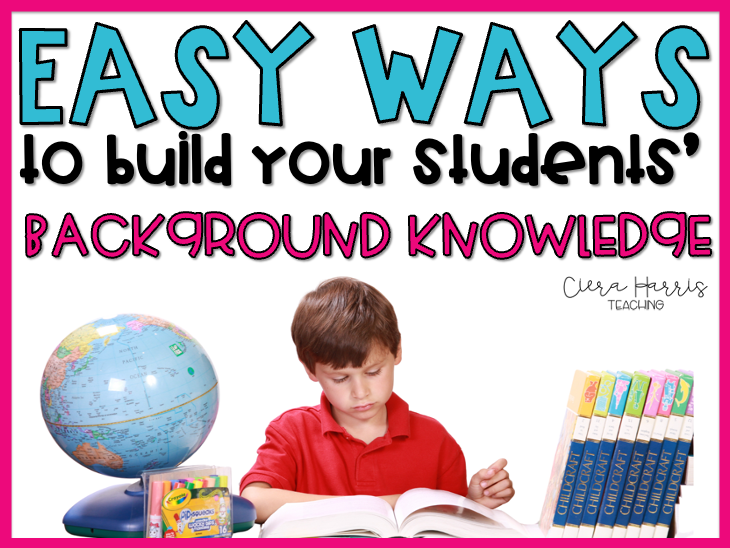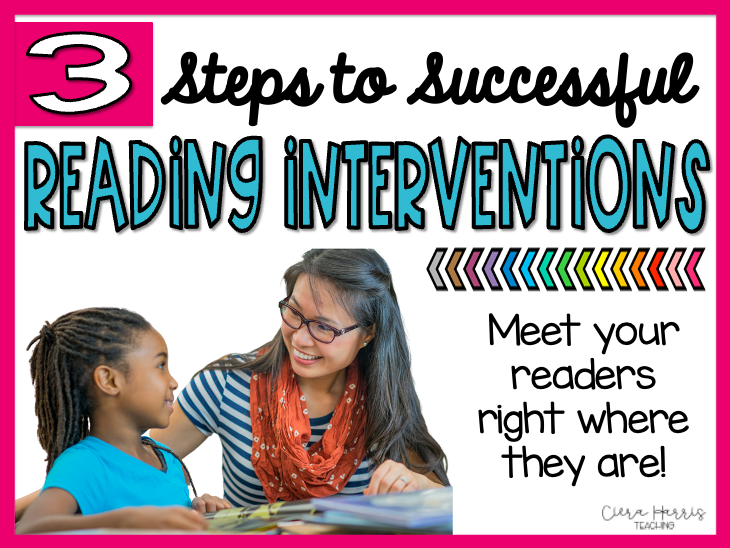Are you starting to feel anxious over the upcoming school year? I totally get it! While we want to soak up every bit of sun and sleep, our minds can’t help thinking about everything there is to do. So, while lying at the pool, think about what worked last year and what you would like to change. This does not have to be a stressful time where you create a long to-do list. Instead, look at this time as a reflection. So, these things to reconsider when teaching reading at the beginning of the school year provide a way to start! Let’s dive in together and see how we can make this upcoming school year the best one ever.
Want to watch the video instead? Check it out below! Make sure to subscribe to get updates on all new content!
#1: Don’t Assume Students Know What ‘Reading Is’
Many times, students think if they just read the words on a page, they are reading. While this is technically true, they are not reading in the academic sense. Let me explain. When we read in school, we focus on so many aspects. This includes comprehension, figurative language, and making connections. However, if students do not know these aspects, they just read the words. They are not improving their understanding or realizing the purpose behind the text.
We must show students what actual reading is. They need to understand why we are reading and what to look for. So, they need modeling to know what it means to use context clues or how to draw inferences out of a text. By spending this time with students, they will become successful readers!
#2: Wait to Start Your Curriculum
You probably think I am crazy for saying this, right? I get it! I really do. Teachers have SO many standards to get through each year. So, there is pressure to get started the minute students enter the classroom for the first time. However, I promise you will see a change in your classroom if you wait. Instead of diving into the material, lay the correct groundwork for your students. For many reasons, waiting will be one of the best things to reconsider when teaching reading at the beginning of the school year!
First, get to know your students MORE! Now, you may be saying you already do this. However, do you get through the first few weeks of school and suddenly learn something important about a student? It happens all the time! So, take more time to dive into who your students are. They will love having a teacher who cares about them so much. Then, when the time comes, they will be eager to learn with their teacher. For more tips on getting to know your students, check out Beyond the Reading Interest Surveys.
Second, consider whether their brains are ready to be readers. Many of your students did not read much over the summer. You cannot expect them to grow from where they left off the previous school year. They need time to adjust, refocus their thinking, and they need smaller readings to help them reawaken their love of reading.
Third, reflect on their strategies and how solid they are before teaching reading. For instance, do students know what to do when encountering a word they don’t know? Do they remember how to use context clues? Do they even know where to turn in work? There are so many aspects to go over before diving into the content. If you take the time now, the year will go much smoother!
#3: Always Teach about Schema First
Everyone organizes their thoughts a bit differently. This means that students will organize their learning and make connections in different ways. This may be on one’s knowledge about people, places, objects, or events. Honestly, students will not just realize they do this.
Thankfully, the Schema Printables and Activities teach students all about schema! The teacher will model and explain schema and go over everything from relationships to talents. After learning about the brain wheel, students will show all they have in their schema. This is such a FUN way to learn about students even more!
To deepen their understanding, students will analyze details in a story to determine what information they already had in their schema. They will also realize they add to this information. I LOVE seeing students light up as they discover how impactful their schema is!
Student thoughts are changing each day. They are experiencing more in the community and learning more at school, So, they will see how they access their schema and how it changes over time. This will help them realize how there are multiple perspectives, such as compassion, empathy, and openness. Then, they will practice using their schema before, during, and after they read to see how they use it to answer questions. This is a great way to help students identify misconceptions as well.
For more information on schema, check out How Schema Affects Students Reading Comprehension. It will provide great insight into understanding how students think.
#4: Have You Taught Them How To THINK?
Students are SO hard on themselves! It breaks my heart to hear them say negative comments. This is why I jump right into teaching students how to think!
Students know themselves better than anyone. So, I go directly to them to learn about their thinking or metacognition. For instance, what are their strengths? What are their weaknesses? By having them answer these questions, I can gain SO much insight into their thinking. I then know where my work begins.
Developing a growth mindset is HUGE! Students must see that their mistakes are okay and learn as they grow. I love to work on fix-it strategies with students. For example, do you have students who are confident going into a test only to be let down by a low score? Maybe they don’t know how to study. Or, perhaps they have test anxiety. My place here is to work with them on fix-it strategies, making teaching reading that much easier. I focus on ways to overcome any weaknesses or struggles standing in their way of achieving goals.
Another critical aspect involves a give-and-take relationship. Students must understand that there are two sides to every story. They need to see situations and identify what both sides look like. When they do, they realize how everyone thinks, feels, and handles obstacles differently. What matters most is how we react and continue.
#5: Building a Culture of Collaboration
Don’t you just love it when all of your students work together? It is the best feeling knowing your students can communicate and collaborate.
Now, have you ever wanted to rip your hair out over constantly telling your students to be nice? I’m sure you have! However, students may not know what is wrong with how they are saying comments. This is because they have to learn how to have successful conversations! They need to learn how to give constructive feedback and interact with classmates despite differences. Students even need to know how to talk about a text. Instead of saying “It was good” or “I agree,” students must practice being specific. Additionally, they need to learn it is okay to interpret something different than others. Honestly, this makes for great conversation!
For more great tips on working together, check out How to Build a Culture of Collaboration in Your Classroom!
When the year starts, life becomes extra stressful. There are so many things to handle in your professional and personal life. These things to reconsider when teaching reading at the beginning of the school year can help reduce your stress! I want you to have an incredible year! Reconsidering these aspects can make your classroom and routines even more amazing.
If you do not want to miss any of the upcoming lessons, join my email list to be notified of all the interactive lessons coming up! By joining the email list, you will also receive freebies for blog exclusive subscribers!









